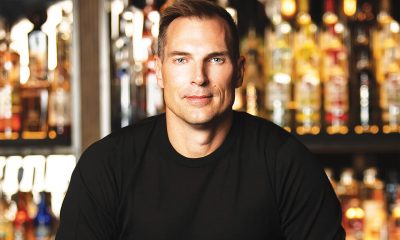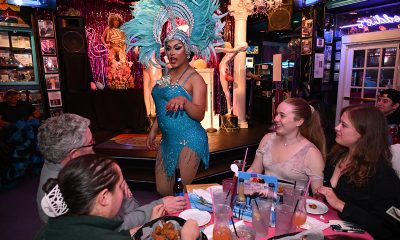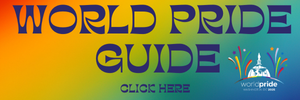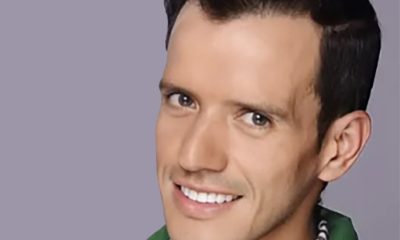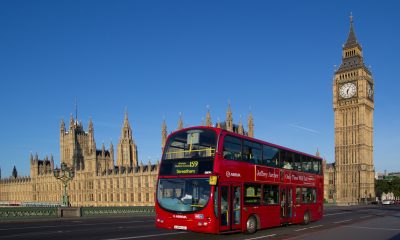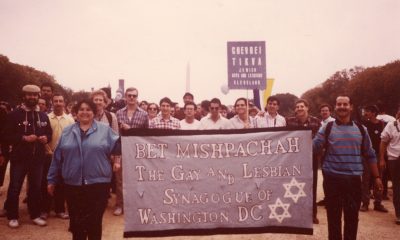Opinions
To many, being referred to as ‘queer’ remains offensive
Washington Post erred in using the term in a recent headline
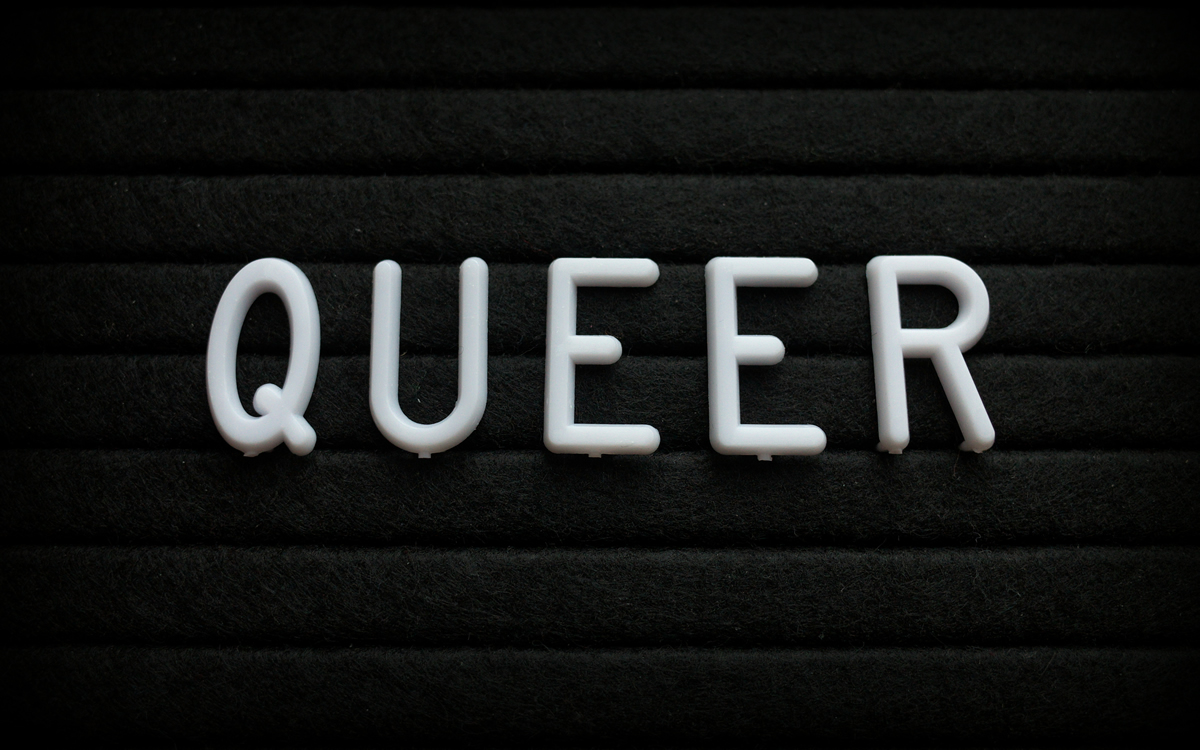
Merriam-Webster dictionary gives various definitions for the word “queer” but also notes: “The term is also prominent as a neutral term in academic contexts that deal with gender and sexuality. Current neutral and positive uses notwithstanding, the word’s long history of pejorative use continued into the current century, and some people still find the word offensive in any context.” I don’t find the term offensive in any context, but do find it offensive when those not members of the LGBTQ community use it to refer to places I go, or to the community I am a member of.
I recently wrote a letter to the Washington Post based on my reaction to the sub-headline of a column appearing on the front-page of their Style section. It read: “After a year of intensified anti-LGBTQ attacks across the country, queer bars, community centers and gay-owned businesses are rethinking how to best protect themselves.” I was offended by their use of the term ‘Queer’ when referring to our bars and indirectly to our community. The author of the column, Anne Branigin, used it to refer to two bars in Adams Morgan owned by a friend — Pitchers and A League of Her Own. I asked this friend if he refers to his bars that way and he said no.
My reaction to this word may be a generational thing. But even if that is the case, I would still ask why the Washington Post would feel comfortable, and find it necessary, to use it in a headline and column, not quoting someone in the community using it, when it still offends many of their readers. I would think the majority of their LGBTQ readers, and likely all readers, are of an age who will be offended.
When growing up there were many reasons I remained closeted. One was knowing if I came out I would be branded as a “faggot” or “queer.” At the time, those terms were used interchangeably. The word queer was directed in a negative way at any guy who was slightly different, maybe effeminate, even if they weren’t gay. It you were gay you certainly didn’t want anyone calling you that. It is a term still used today to insult members of the LGBTQ community by many who oppose any kind of equality, or acceptance, of the community. Today, with the increase in hate crimes against the LGBTQ community, it is being used and can be used, to prove a hate crime. I feel strongly the media, and those not members of the community, should not be adopting a word still used to slander the community. While it may seem cool or ‘woke’ to some, it is important to recognize to many it is still a very offensive word.
Hate crimes are rising against so many minorities along with the increase in anti-Semitism. The media should be careful not to use words offensive to members of the Asian community, or the African-American community. I understand younger members of the LGBTQ community are getting much more comfortable with the word queer and using it often. Recently I heard a young member of the disability community refer to himself and a friend as “gimps.” Having worked in that community for many years I was amazed at its usage. But again, they were using it with each other. No media outlet would or should ever consider using such words when reporting on or writing about those communities. The same would go for words a Jewish person might consider using with another Jewish person, within the community.
Following my initial visceral reaction to the headline, I began asking some of my friends in the LGBTQ community, and some straight friends, their thoughts on the word. It led to some interesting discussions. I also found some of my younger friends never realized it had been used to debase and attack the community.
Many of my older friends, and straight friends, had a similar reaction to it that I did. They had heard younger people using it and were as surprised as I was to find some young people in our community had no idea about its history. They were willing to accept young people might use it among themselves within the community but were also appalled the Washington Post thought it was OK to use it in describing something in the LGBTQ community as they still saw it as a derogatory term and one of hate.
Peter Rosenstein is a longtime LGBTQ rights and Democratic Party activist. He writes regularly for the Blade.
Opinions
Country needs a new form of patriotism
Trump-Vance administration, supporters have left marginalized Americans even more scared
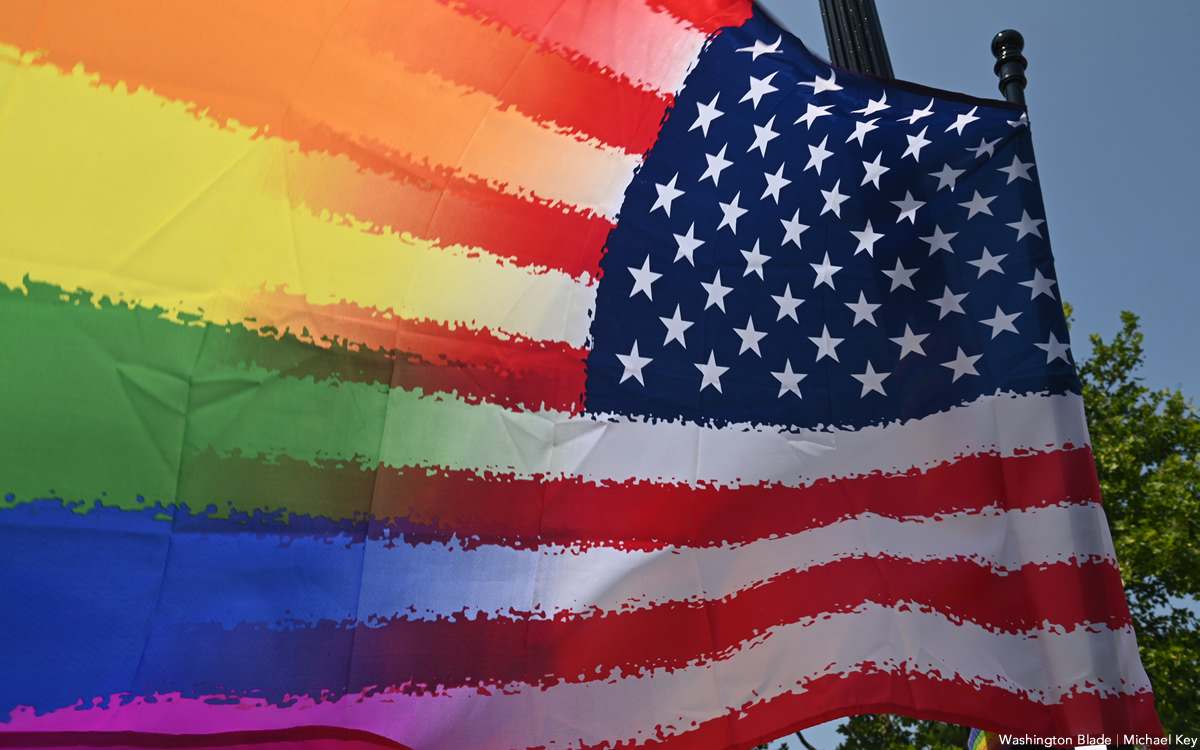
In lieu of the right-wing takeover both in the government and the country as a whole, the current view of patriotism from marginalized communities is often seen as supportive of patriarchal, misogynistic, and anti-LGBTQ ideals. The patriot is often seen as someone who supports the idea that America is only one way and that way is one not so geared towards progress. Right now, there are plans in place for several marginalized people, whether they be queer or racial minorities, to perhaps abandon the country, or at the very least lose respect for it, given the whole passport debacle, because of how strong conservatives came in after the induction of the second Trump administration. The response is warranted. We are being told that who we are and what we stand for are not American.
I‘ve noticed that when people distance themselves from the idea of being American or a patriot, it allows these right-wing ideas to take over and distort the image of what being American means in a way that is unchallenged. It is manipulating the entire image of what it is like to be American, which is being presented as cisgender, straight, and white. Right now, transgender service men and women are having their right to serve this country stripped from them simply because of their gender identity. Their sacrifices are seen as wrong or even weak.
However, I feel like now is a time to bolster a new form of patriotism for those who are still here and cannot afford to leave. As WorldPride makes its way to Washington, D.C., I’ve taken a moment to reflect on what it is like to be both a queer and racial minority born and raised near the nation’s capital. I find that regardless of how much conservatism has emboldened right-wing supporters and clutched the federal government, I am very much proud to see the revolt and the pride that people have for who they are regardless of.
Living in a country founded on freedom and the right to self-actualization, that being proud of oneself, and fighting for the freedom to be oneself is innately American.
The intersectionality of being both queer and African American, paired with the historical knowledge of how both identities have been treated does in fact make it hard to be proud of the American title of ”patriot.” But the country and history of the country are not owned by the conservative body. Right now, they are scrambling and trying to control every facet to re-brand the image of what a patriot looks like to change both the history and future of America.
With that being said and WorldPride merely days away, there now needs to be a call to maybe not reject patriotism, but reshape it into a form of patriotism that reflects the progress that marginalized communities wish to see. Marsha P. Johnson sparked a movement with her revolt at Stonewall, an act just as American as the shot heard around the world. Perseverance, courage and determination during this time is as American as it gets. Queer, trans, and other marginalized people are shining examples of what it means to be Americans. We give our time, money, and lives to make this country thrive.
Though the past has been dark, stealing both land, people and ideologies from those deemed unfit to be seen as American, this is our country as much as it is theirs. The right feared the progress that was being made over the past decade and made their moves to halt it. Now is the time to counter those moves and show them what our patriotism looks like.
Opinions
Has the LGBTQ rights movement embraced disabled queers?
Disability rights activists took their inspiration from queer activists
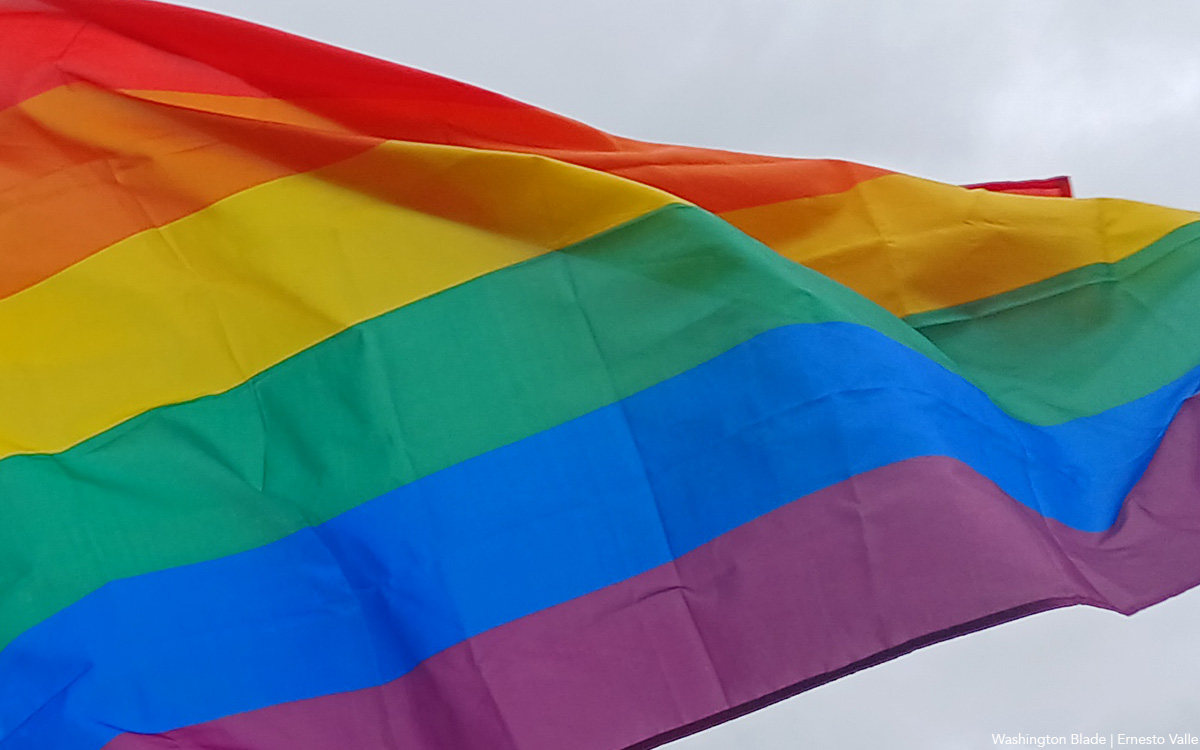
When I was a teenager, I rarely heard about LGBTQ Pride — and I heard even less about Disability Pride. In the church my father attended, LGBTQ people were spoken of as sinful, and disability in the culture in which I was raised was something to be hidden away in shame. I could never have imagined that one day, I would become an openly autistic transgender activist, working with disability and LGBTQ rights organizations across the world — from Ukraine and Russia to the U.S., the U.K., and Australia.
But I still remember the clenching emptiness I felt when my favorite stand-up comedian joked that gay people were “sick folks with proven hormonal problems.”
“We don’t celebrate illnesses,” he said. “What’s there to be proud of?”
The audience applauded. But to me, it felt cruel. Even though I was afraid to think too deeply about LGBTQ rights at the time, I had seen disabled children bullied and excluded. And I remember wishing there was a way for disabled people to celebrate their survival and their resilience.
Years later, I learned what Pride really meant. That LGBTQ people aren’t simply proud of who they are — they’re proud to still be here, to still be themselves, despite the hatred and violence they’ve faced. And when I learned more about Disability Pride, I realized it was rooted in the exact same principle.
Disability Pride Month is July.
It originated in the United States in 1990 when the Americans with Disabilities Act was passed. The movement borrows directly from LGBTQ Pride — from the very word pride to the idea of a disability pride flag, created in 2019 by Ann Magill, a writer with cerebral palsy. Today, the flag is used not just at Disability Pride events, but also within queer spaces — even on the self-care app Finch, where it’s displayed alongside LGBTQ flags.
Like many movements that began in the U.S., Disability Pride has since gone global. It’s been officially celebrated in the U.K. since 2015, and I first heard about it in Russia during a queer community event.
“Disabled people have their own Stonewall,” a colleague once told me during his presentation. He was referring to the Capitol Crawl, a protest in 1990 when over 1,000 disabled Americans marched from the White House to the Capitol. Upon arriving, about 60 activists, including 8-year-old Jennifer Keelan-Chaffins, left their wheelchairs and mobility aids behind and crawled up the Capitol steps, hand over hand. This powerful act of civil disobedience exposed the brutal inaccessibility disabled people faced daily. By the end of the day, 104 participants were arrested.
That protest helped push the ADA through Congress — and it’s remembered as a landmark moment, much like Stonewall. Disability rights activists around the world have long seen LGBTQ Pride as an inspiration — and the influence is undeniable.
Even within the broader disability rights movement, smaller communities have formed their own pride traditions. Autistic Pride Day is on June 18, and I was the first person to promote it in Russia — again, inspired by American activists. It was local LGBTQ organizations that helped me organize those early Autistic Pride events.
This seemed like a logical collaboration, but, sadly, this support happened less often than it should.
Even though younger LGBTQ activists — especially those from Gen Z — are often extremely supportive toward disabled and neurodivergent people, large LGBTQ organizations still struggle to follow through. As someone who’s worked with both LGBTQ and disability communities across Ukraine, Russia, Israel, Europe, Australia, the U.K., and the U.S., I can say this honestly: I’ve never seen a fully disability-inclusive LGBTQ event or Pride.
LGBTQ Pride culture is overwhelmingly neurotypical and built by non-disabled people for non-disabled people. This is despite the fact that at least 16 percent of LGBTQ people are disabled — the same percentage as the general population. In fact, the real number is likely even higher, due to the intersection between queerness and autism, and because LGBT people experience higher rates of mental health challenges because of the minority stress.
Making Pride more accessible isn’t difficult. It just requires intention:
- Choose routes and venues that are wheelchair accessible
- Allow support animals
- Create a quiet room for sensory regulation
- Avoid epilepsy triggers in lighting and visuals
- Provide clear, easy-read information about the event
- Use image descriptions and communication badges
But above all, listen. Adopt the disability rights movement’s principle of “nothing about us without us.” Include disabled LGBTQ activists in planning, outreach, and leadership for Pride preparation. Not as a checkbox, but as core contributors to the event and the community. We deserve more than just being a token.
Even during the Trump administration, the American LGBTQ movement has powerful influence across the globe. If U.S.-based Pride events commit to accessibility, they can help set a new worldwide standard. And that would be a powerful message — especially now when both LGBTQ and disability rights are under political attack in the U.S. and beyond. Accessible and inclusive Pride parades may be the first step to make. The LGBTQ and disability rights communities need to work together against bigotry and hate — especially because of the Pride history we share — and not let accessibility barriers divide us.
Opinions
WorldPride is here and LGBTQ Jews must be fully welcome
An opportunity to model what queer liberation should look like
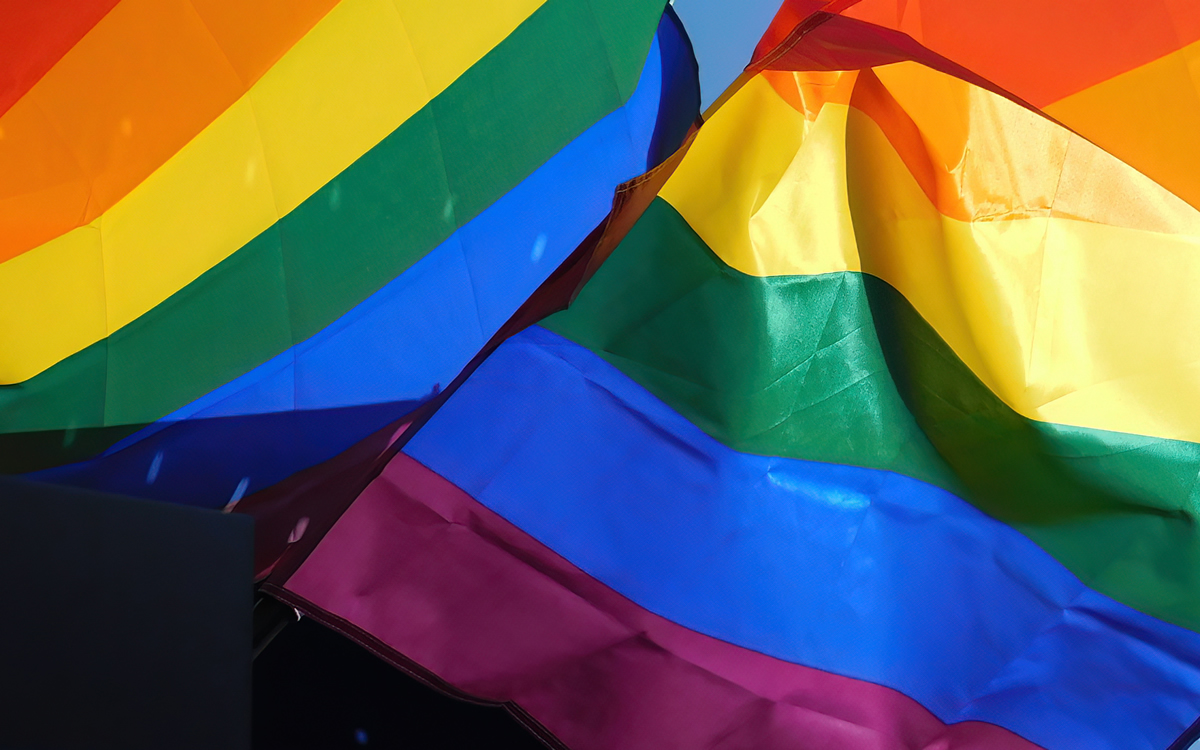
As someone who’s spent a career working to ensure LGBTQ+ people are represented in politics, welcomed in public life, and protected under law, I know how powerful visibility can be. I’ve also seen what happens when that visibility is denied — especially to those at the intersection of marginalized identities.
That’s why, as WorldPride arrives in Washington, D.C., I’m filled with both pride and a sense of deep responsibility.
WorldPride isn’t just a parade. It’s a global platform — a moment when the world’s eyes will be on our city. It’s an opportunity to model what queer liberation should look like: bold, inclusive, principled, and expansive.
But I’m also hearing, more and more, from LGBTQ Jews who aren’t sure they’ll be safe to show up.
Since Oct. 7, antisemitism has surged around the globe — including in progressive and queer spaces. We saw it last week when two Israeli embassy workers were killed in a shooting at the Capital Jewish Museum. Across the country, Jewish LGBTQ people are being asked to choose between parts of who they are. I’ve seen groups disinvited from Pride events for displaying a Jewish star. I’ve heard from friends who are now afraid to wear religious symbols in LGBTQ spaces. And I’ve witnessed silence from movement leaders when antisemitism appears — cloaked in politics, but no less dangerous.
As a gay Jewish man, I know how that erasure feels. And I know what it looks like to be told you’re welcome only if you agree to leave part of yourself at the door.
WorldPride in D.C. must not send that message.
This is our city. And this is our chance to lead. We can’t just be proud — we have to be accountable. We have to ensure that Pride is truly a space for all of us, including LGBTQ Jews who carry grief, identity, and history that may not always align neatly with dominant narratives.
That means taking action. It means working with groups like A Wider Bridge to make sure Jewish LGBTQ people are included at every level of planning. It means briefing security teams and marshals to protect—not police—those who show up with Jewish symbols. It means being clear that antisemitism, like all forms of hate, has no place at Pride.
It also means recognizing how deeply intertwined Jewish history is with queer liberation. From Harvey Milk, one of the first openly gay elected officials, to countless Jewish LGBTQ activists who’ve helped shape movements from Stonewall to marriage equality, Jewish LGBTQ individuals have long been integral to our progress. Erasing their Jewishness erases our history and undermines our future.
We must reject purity tests that ask queer Jews to disavow who they are in order to be accepted. Such demands not only isolate LGBTQ Jews but weaken the solidarity that has been foundational to our collective progress.
To the organizers of WorldPride: You have the power to set the tone for the world. Use it to uplift — not exclude. Bring in diverse Jewish voices, especially Mizrahi, Sephardi, trans, and queer Jews of color. Make space for their grief. Honor their joy. Ensure their safety. And publicly affirm their presence, making clear that visibility at Pride includes the visibility of Jewish symbols, experiences, and identities.
To my fellow LGBTQ leaders: We’ve long said our movement must be inclusive. That must include Jews. Period. Inclusivity isn’t conditional. It means standing unequivocally against antisemitism, even — and especially — when it’s difficult or uncomfortable.
And to LGBTQ Jews: Don’t sit this one out. I understand the hesitation, the exhaustion, and the fear. But this moment calls for courage, too. You belong in every rainbow-colored corner of this movement. Wear your stars. Carry your flags. Share your stories and reclaim your visibility. Show up as your whole self.
WorldPride is here. Let’s make it a beacon — not just of celebration, but of courage, complexity, and true community. Let’s show the world a Pride that doesn’t just speak of solidarity but embodies it fully, unequivocally, and joyfully for every LGBTQ person — including Jews.
Marty Rouse is a renowned D.C. LGBTQ activist. He served for decades at the Human Rights Campaign and the Victory Fund.



